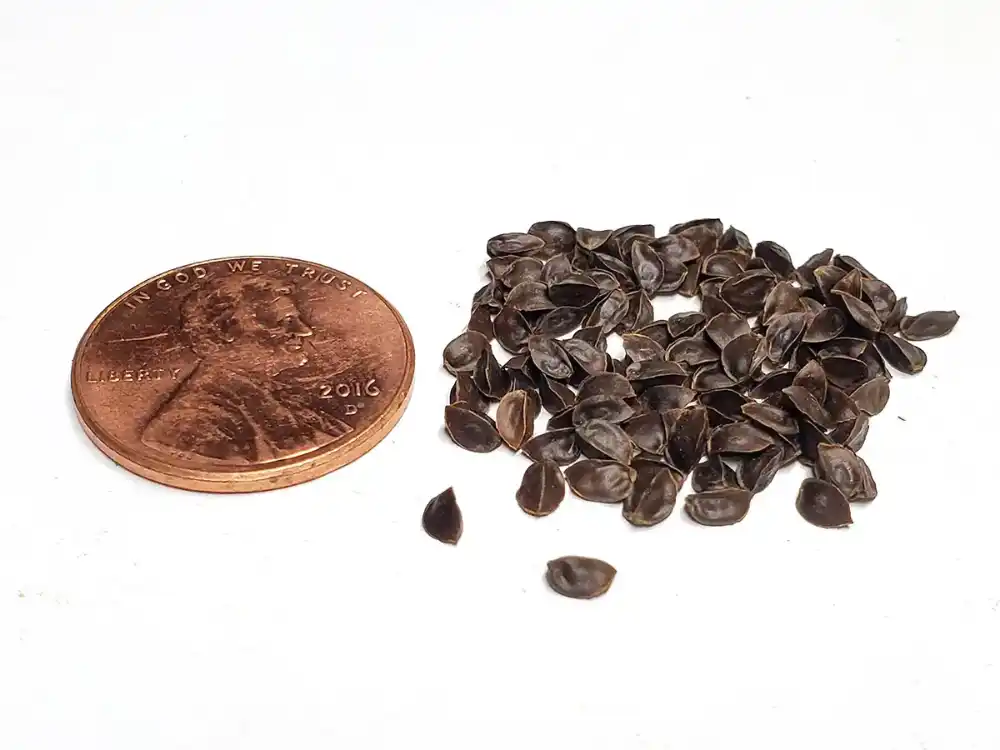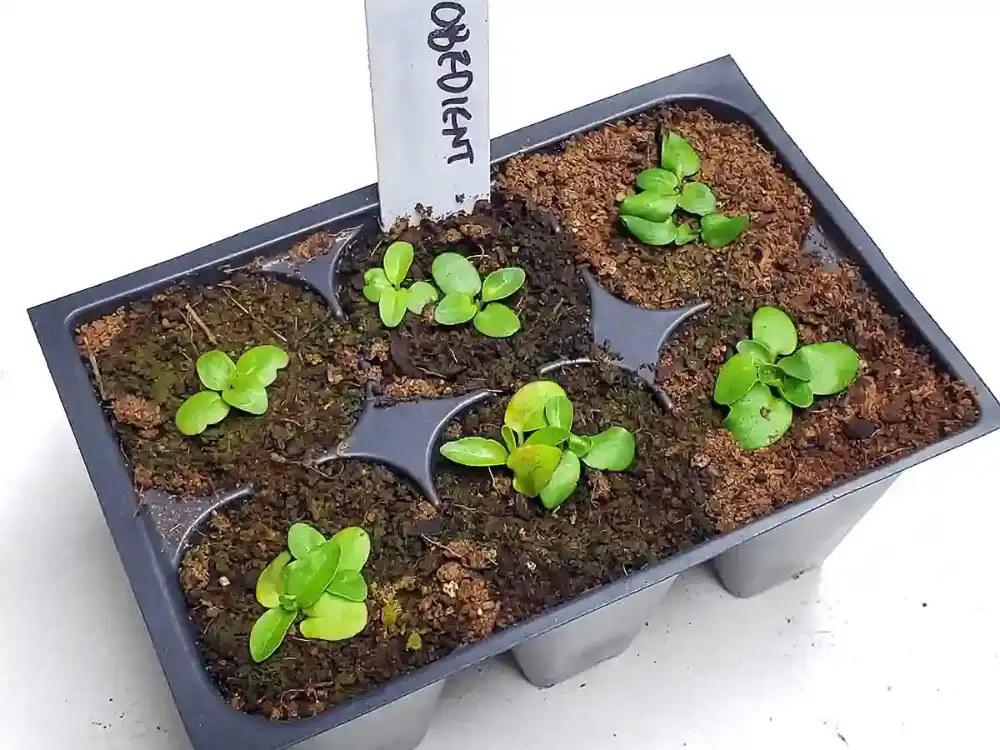Flower Gardening
Obedient Plant From Seed: Grow Stunning Flowers, Simple Steps!
Cultivating Obedient Plant from seed can be a rewarding experience, adding a touch of beauty and charm to your garden with its unique, eye-catching blooms. In this comprehensive guide, we’ll walk you through the process of growing Obedient Plant from seed, sharing valuable tips and tricks to ensure your gardening success.
Obedient Plant Basics
| Botanical Name | Physostegia virginiana |
| Height | 3-4 feet (90-120 cm) |
| Spread | 2-3 feet (60-90 cm) |
| Germination time | 20-30 days |
| Seed planting depth | 1/4 inch (6 mm) |
| Blooms | Late spring to early fall |
| Attracts | Bees, butterflies, hummingbirds |
| Description | Perennial with tall spikes of tubular flowers in shades of pink, purple, or white; native to North America |
About Obedient Plant?
Obedient Plant, also known as Physostegia virginiana, is a perennial native to North America, showcasing tall, distinctive spikes of tubular flowers in shades of pink, purple, or white.
The blooms create an enchanting visual effect, as they appear to “obey” your touch when moved, hence the name “obedient plant.”
They attract pollinators such as bees, butterflies, and hummingbirds, making your garden a lively and bustling haven for these beneficial creatures.
This low-maintenance perennial is perfect for borders, cottage gardens, and naturalized areas.
And the best part? You can easily grow Obedient Plant from seed, giving you complete control over your plant’s journey from the very beginning.
Collecting Obedient Plant Seeds: A Step-by-Step Guide
Saving and collecting Obedient Plant seeds is an economical and rewarding way to propagate new plants for your garden or share with fellow gardeners.
By following these simple steps, you can successfully harvest Obedient Plant seeds and ensure a continuous supply of these enchanting perennials for seasons to come.
Monitor the blooms
Obedient Plant seeds develop in the spent flower heads after the blooms have faded. As the flowering season progresses, keep an eye on the plants, and watch for the formation of seed pods. These pods will initially be green and gradually turn brown as they mature.
Choose the right time
Timing is crucial when collecting Obedient Plant seeds.
Wait for the seed pods to dry and turn a light brown color, but harvest them before they split open and release the seeds. This typically occurs several weeks after the blooms have faded.
Harvest the seed pods
Using pruning shears or scissors, carefully snip off the dried seed pods from the plant. Be gentle to avoid crushing the pods and releasing the seeds prematurely. Place the harvested pods in your container or paper bag as you work your way through the plant.
Separate the seeds
Once you have collected all the seed pods, find a clean, dry work surface to separate the seeds from the pods. Gently crush the pods between your fingers or use a rolling pin to release the seeds. As you work, remove any debris or chaff to ensure you are left with clean, viable seeds.
Dry and store the seeds
Before storing the seeds, spread them out on a tray or paper towel and allow them to air dry for a few days. This helps prevent mold or mildew from developing during storage.
Once the seeds are thoroughly dry, transfer them to a labeled envelope or airtight container.
Store the seeds in a cool, dark, and dry location, such as a basement or a closet, until you are ready to sow them the following season.
Grow Obedient Plant from Seed: Indoors

Before you begin planting, assemble all the necessary tools and supplies, such as seed starting trays or pots, seed starting mix, and a seedling grow light or a sunny windowsill.
Having everything ready and organized will help streamline the process and make it more enjoyable.
Preparing for Planting
A well-draining and sterile soil is essential for healthy seed germination and can be easily prepared by combining equal parts of peat moss, vermiculite, and perlite. Fill your seed trays or pots with the mix and gently moisten it with water, ensuring it is evenly damp but not soggy.
Planting the seeds
Sow Obedient Plant seeds about 1/4 inch deep in the soil mix. You can use a pencil or your fingertip to create small holes in the mix, dropping one seed into each hole. Gently cover the seeds with mix and water them lightly, taking care not to dislodge them from their position.
Caring for the seeds during germination
Consistent moisture, warmth, and light are key factors that determine the success of Obedient Plant seed germination, which generally takes 20-30 days. Maintain even moisture levels by using a spray bottle to mist the mix daily or as needed. Place your seed tray or pots in a warm location, ideally between 65-75°F. If possible, provide your seeds with bright, indirect light or place them under a grow light for optimal germination.
Transplanting Seedlings
Hardening off the seedlings
Before transplanting your Obedient Plant seedlings outdoors, they must be gradually acclimated to outdoor conditions through a process known as hardening off. Begin by placing the seedlings outside in a sheltered, partly shaded area for a few hours each day, gradually increasing their exposure to sunlight and the elements over the course of 7-10 days. This process helps the seedlings adjust to the fluctuating temperatures and conditions of the outdoors, reducing the risk of transplant shock.
Selecting the ideal planting location
Choose a suitable location in your garden that meets the Obedient Plant’s sunlight and soil requirements to ensure its healthy growth and development. As mentioned earlier, these plants prefer full sun to partial shade and well-draining, consistently moist soil. Additionally, consider the mature size of the plants when selecting a spot, allowing adequate space for them to spread and grow without overcrowding.

Transplanting the seedlings outdoors
After the risk of frost has passed and the seedlings have been hardened off, carefully transplant them into your garden, spacing them about 12-18 inches apart to allow for proper growth.
Dig a hole slightly larger than the seedling’s root ball, gently removing the seedling from its pot and placing it in the hole.
Fill in the hole with soil, firming it around the base of the seedling, and water thoroughly to help the roots establish themselves in their new environment.
Grow Obedient Plant from Seed: Direct Sowing Outdoors
If you decide to direct sow the seeds of the Obedient Plant it’s best to do so in the late fall after several frosts but before snow covers the ground.
Plant the seeds just below the surface of the soil no more than 1/4″ depth in groups of 2-3 seeds, space the groups about 18-24″.
Planting outdoors is not as reliable as starting them indoors due to the potential for critters etc. to disturb or eat your seeds before they get a chance to germinate.
Ongoing Care and Maintenance
Watering and fertilizing
Regular watering and the occasional application of a balanced fertilizer are essential to maintaining the health and vigor of your Obedient Plant.
Water your plants deeply and consistently, ensuring the soil remains evenly moist but not waterlogged.
Apply a slow-release, all-purpose fertilizer in the spring and again in mid-summer to promote strong growth and vibrant blooms.
Pruning and deadheading
Pruning and deadheading spent blooms throughout the growing season encourage bushier growth and continuous flowering while also preventing self-seeding and potential invasiveness.
Cut back any spent flower spikes using clean, sharp pruning shears, and trim back any leggy or overgrown stems to maintain a neat, compact appearance.
Pest and disease control
Monitoring your Obedient Plant for common pests and diseases, such as aphids and powdery mildew, and taking timely preventive measures are crucial in ensuring its long-term health and beauty.
| Pest | Symptoms | Treatment |
|---|---|---|
| Aphids | Curling/yellowing leaves, sticky residue | Release beneficial insects (ladybugs), insecticidal soap, neem oil |
| Spider Mites | Yellowing leaves, fine webbing on leaves/stems | Insecticidal soap, neem oil, predatory mites, water spray |
| Slugs and Snails | Irregular holes in leaves, slime trails | Slug/snail bait, beer traps, copper tape, crushed eggshells |
| Whiteflies | Tiny white insects, yellowing leaves | Beneficial insects (lacewings), yellow sticky traps, insecticidal soap |
| Japanese Beetles | Skeletonized leaves, chewed flower petals | Handpick beetles/soapy water, pheromone traps, neem oil |
Sharing Your Blooming Success
Now that you’ve learned how to grow Obedient Plant from seed, it’s time to put your newfound knowledge into practice and create a dazzling display of these unique perennials in your garden.
As your plants flourish, don’t hesitate to share your experiences and insights with fellow garden enthusiasts. Encourage others to try their hand at growing Obedient Plant from seed, and invite them to share their own stories and successes in the comments section below.
By fostering a community of gardeners, we can all learn from each other and continue to cultivate beautiful, thriving gardens for years to come.
FAQ: Obedient Plant From Seed
Is obedient plant invasive?
Obedient Plant can spread aggressively through rhizomes, making it invasive in some areas. To control its spread, plant it in a designated area, use barriers, or remove new shoots regularly.
Can I grow obedient plant in containers?
Yes, obedient plant can be grown in containers. Choose a large container with drainage holes and use well-draining, moist potting soil for optimal growth.
How long does it take for obedient plant to bloom from seed?
It typically takes a full growing season for obedient plant to bloom from seed. You can expect flowers in late spring or early summer the following year.
Do deer eat obedient plant?
Obedient plant is not a favorite of deer, but in times of scarce food, they may nibble on it. Planting deer-resistant plants nearby can help deter them from your garden.
Are obedient plants toxic to pets?
Obedient plant is not considered toxic to pets. However, it’s best to prevent pets from ingesting any plants, as individual reactions can vary. Contact your veterinarian if you have concerns.






